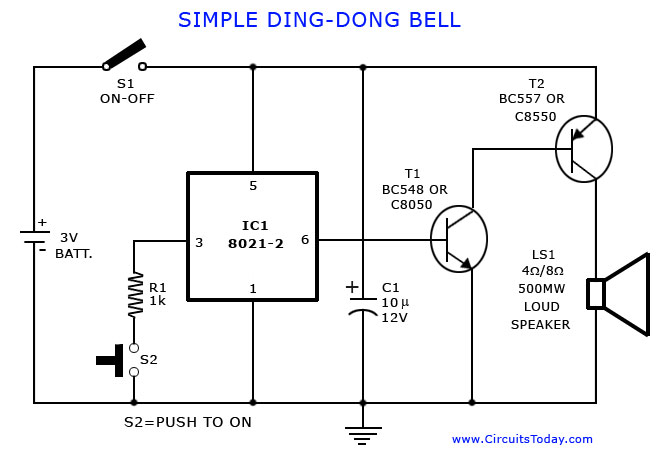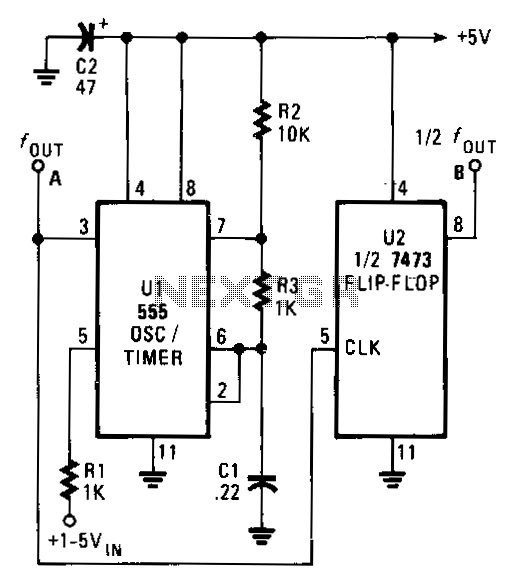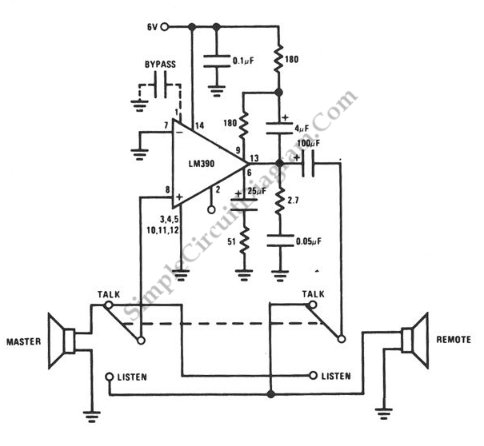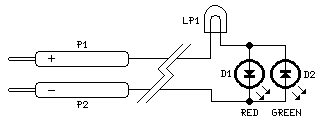
simple magnitude comparator
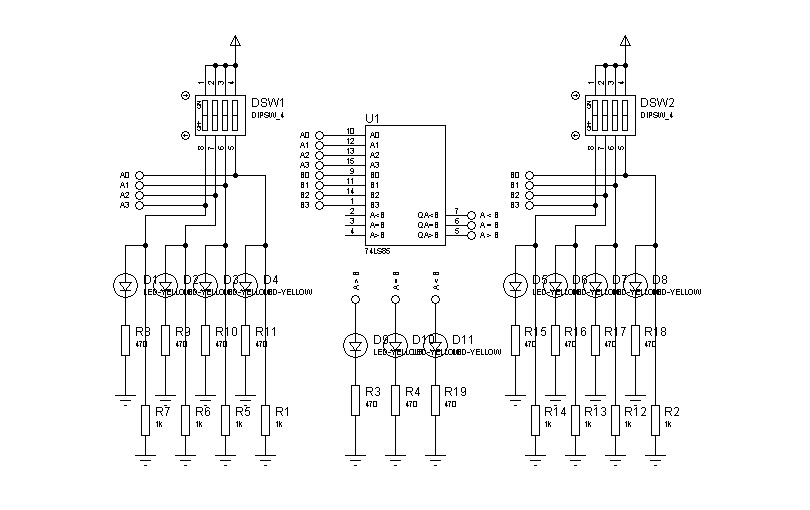
In designing a logic circuit, it is often necessary to compare the values of two digital data inputs. Creating a custom magnitude comparator can lead to increased use of logic integrated circuits (ICs), as well as greater time and cost investments. The 7485 magnitude comparator IC can simplify this process. It is capable of comparing two 4-bit data values and can be cascaded with additional magnitude comparators. This IC is particularly useful in applications such as digital electronic games, where determining the winner based on scores is required.
The 7485 magnitude comparator is a versatile integrated circuit designed to compare two 4-bit binary numbers, providing three output signals: A greater than B, A equal to B, and A less than B. The device operates with a supply voltage typically ranging from 4.5V to 5.5V, making it suitable for standard TTL logic levels.
In operation, the comparator receives two 4-bit inputs, labeled A and B. Each input consists of four bits, which are compared bit by bit, starting from the most significant bit (MSB) to the least significant bit (LSB). The outputs indicate the relationship between the two inputs, allowing for easy integration into larger digital systems.
The cascading capability of the 7485 allows multiple comparators to be connected in series, enabling the comparison of wider binary numbers beyond 4 bits. By connecting the carry-out (CO) output of one comparator to the carry-in (CI) input of the next, it is possible to create a multi-bit comparator system. This feature is particularly advantageous in applications that require the comparison of larger values, such as score tracking in digital games or complex decision-making algorithms in microcontrollers.
The 7485 magnitude comparator is packaged in a standard 16-pin dual in-line package (DIP), facilitating easy integration into various circuit designs. Its simplicity and effectiveness make it a popular choice for engineers and hobbyists working on digital logic projects. The comparator's outputs can be directly interfaced with other logic gates, microcontrollers, or display systems, providing a seamless transition from comparison to action based on the results.In designing logic circuit, it is sometimes necessary to compare values of two digital data. In this case, creating your own magnitude comparator can cause you more logic IC and can consume more time and money. This magnitude comparator IC might help you. It can compare two 4-bit data but can be cascaded to other magnitude comparator. It is the 74 85 IC. This 7485 magnitude comparator is one of my favorite logic ICs. This IC helped me a lot in my school projects specially on digital electronic games like chess, fight combat, etc. I usually use this chip in declaring the winner of having a higher score. 🔗 External reference
The 7485 magnitude comparator is a versatile integrated circuit designed to compare two 4-bit binary numbers, providing three output signals: A greater than B, A equal to B, and A less than B. The device operates with a supply voltage typically ranging from 4.5V to 5.5V, making it suitable for standard TTL logic levels.
In operation, the comparator receives two 4-bit inputs, labeled A and B. Each input consists of four bits, which are compared bit by bit, starting from the most significant bit (MSB) to the least significant bit (LSB). The outputs indicate the relationship between the two inputs, allowing for easy integration into larger digital systems.
The cascading capability of the 7485 allows multiple comparators to be connected in series, enabling the comparison of wider binary numbers beyond 4 bits. By connecting the carry-out (CO) output of one comparator to the carry-in (CI) input of the next, it is possible to create a multi-bit comparator system. This feature is particularly advantageous in applications that require the comparison of larger values, such as score tracking in digital games or complex decision-making algorithms in microcontrollers.
The 7485 magnitude comparator is packaged in a standard 16-pin dual in-line package (DIP), facilitating easy integration into various circuit designs. Its simplicity and effectiveness make it a popular choice for engineers and hobbyists working on digital logic projects. The comparator's outputs can be directly interfaced with other logic gates, microcontrollers, or display systems, providing a seamless transition from comparison to action based on the results.In designing logic circuit, it is sometimes necessary to compare values of two digital data. In this case, creating your own magnitude comparator can cause you more logic IC and can consume more time and money. This magnitude comparator IC might help you. It can compare two 4-bit data but can be cascaded to other magnitude comparator. It is the 74 85 IC. This 7485 magnitude comparator is one of my favorite logic ICs. This IC helped me a lot in my school projects specially on digital electronic games like chess, fight combat, etc. I usually use this chip in declaring the winner of having a higher score. 🔗 External reference
